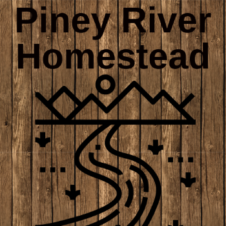Ever looked at a patch of degraded land and thought to yourself, “Wow, this needs some major TLC”? Well, permaculture ecosystem restoring techniques could make even the scrappiest plot of land look like Eden reborn. Whether you’re working with a backyard, a farm, or a larger landscape, the goal is simple—restore ecosystems while Mother Nature does her thing.
Here’s a deep (but not too deep) dive into permaculture strategies for ecosystem restoration mixed with a sprinkle of practical humor to keep things relatable!
I. Permaculture Ecosystem Restoration Techniques
A. Site Assessment and Planning
Before you plant a single seed or dig a hole, know your land like the back of your hand. Seriously, put down the trowel for a second.
- Soil Analysis and Remediation – Dirt isn’t just dirt. Is it sandy or sticky? Acidic or alkaline? Figure it out! Healthy soil is the backbone of any restoration project. Composting, mulching, or adding biochar (magic soil sauce) can help reboot unhealthy soil.
- Hydrology Assessment – Got water running off your land faster than Usain Bolt on race day? Time to map out swales or keyline designs to manage runoff and improve water infiltration. Think of it as hydrological feng shui.
- Native Species Identification – Why fight nature when you can work with it? Learn which plants belong in your area. They’ve survived without human meddling for centuries—they know what they’re doing.
- Historical Ecosystem Mapping – Dig into the past (not just physically) to understand how the land used to function. Was it a thriving forest or a lush wetland? Start aiming to mimic those conditions.
B. Implementation Strategies
Alright, you’ve drawn your maps and nerded out over soil charts. What’s next? Action time!
- Staged Restoration Approaches – Don’t try to fix everything at once. Go step by step. Nature’s not in any rush (and neither should you be). Focus on stabilizing one area before tackling another.
- Keystone Species Introduction – Every ecosystem has its rockstars. Introduce keystone species—those plants or animals that keep everything in harmony. It’s like putting a lead singer in your band.
- Erosion Control Methods – Got bare, eroding soil? Not anymore. Plant ground covers, install straw wattles, or build terraces to keep that precious topsoil where it belongs—on your land.
- Water Management Systems – From ponds to rain gardens, managing water efficiently is a must. Think of water like gold and build systems to keep it circulating on-site.
II. Biodiversity and Habitat Creation
Any permaculture enthusiast will tell you—biodiversity is everything. Think of it like hosting the ultimate potluck party where every plant and critter brings something valuable to the table.
A. Habitat Design Elements
- Vertical Layering Strategies – Picture a forest—tall trees, shrubs, ground cover, root crops, the works. Mimic that! A layered design encourages diverse wildlife to settle in (and keeps things looking super Pinterest-worthy).
- Water Features and Wetlands – Want frogs, dragonflies, and birds on your land? Add a pond or create wetlands. Bonus points for making it look like it’s been there forever.
- Dead Wood and Rock Formations – Dead wood isn’t deadweight! Leave some logs around for beetles and fungi to feast on. Rocks? Instant lizard hotels.
- Wildlife Corridors – Think globally! Set up pathways for animals to move freely through your land. (Yes, even deer deserve a safe commute.)
B. Species Selection and Integration
Choosing plants and critters is like building a winning sports team—balance is key.
- Native Plant Communities – These guys don’t need babysitting; they’ve thrived for centuries. Use them.
- Pollinator Support Species – Bees, butterflies, and hummingbirds will thank you eternally if you plant natives that provide year-round nectar. No pollinators? No crops. No crops? We all cry.
- Beneficial Insect Attraction – Ladybugs and lacewings over pesticides, always. Attract them by planting dill, fennel, or yarrow. Think of it as recruiting bodyguards for your garden.
- Vertebrate Habitat Requirements – Birds, bats, frogs—they all play critical ecosystem roles. Create spaces tailored to their specific needs. Birdhouses and bat boxes are always a hit.
III. Companion Planting and Polyculture Systems
Want a resilient ecosystem? Mix it up with friends—literally.
A. Plant Guild Development
- Root Structure Compatibility – Some plants hate being neighbors, while others thrive together. Make friends out of your plants by ensuring their roots don’t clash.
- Nutrient Cycling Relationships – Beans and nitrogen-fixing species = life hacks for natural soil fertility. Plants that feed each other? We stan.
- Pest Management Strategies – Garlic near your roses? Aphids, be gone. Companion planting keeps pests scratching their heads and running elsewhere.
- Temporal Spacing Considerations – What grows slowly might need a fast buddy to shield the soil meanwhile. Timing is everything.
B. Multilayer Cultivation
- Canopy Organization – Big trees up top, smaller plants underneath. Nature has been layering before layering was cool.
- Understory Integration – Fill the gaps under the canopy with shade-tolerant species. The understory is like the cozy Airbnb of the forest.
- Ground Cover Selection – Clover, thyme, or creeping ground covers keep weeds at bay and protect the soil. Win-win.
- Root Crop Coordination – Don’t forget sweet potatoes, carrots, and other underground goodies. They’ll keep things functional and delicious.
IV. Regenerative Agriculture Practices
No shortcuts here—just good old-fashioned eco-friendly farming.
A. Soil Building Techniques
- Cover Cropping Systems – Cover crops like vetch and clover hold soil in place and improve fertility. “Green manure,” if you will.
- No-Till Methods – Disturbing soil is so last season. Keep those microbes happy and alive by avoiding tilling whenever possible.
- Composting Strategies – Compost is the ultimate pay-it-forward gift to your soil. Black gold, baby.
- Biochar Implementation – Add biochar to the mix to supercharge water retention and soil health. Simple but revolutionary.
B. Water Management
- Swale Systems – Swales, aka ditches with a purpose. They help water stick around to hydrate thirsty soil.
- Keyline Design – Strategically contour your land for better water distribution. Think of it as topography’s BFF.
- Irrigation Efficiency – Drip irrigation isn’t flashy, but boy is it smart. Plant roots get exactly what they need, nothing wasted.
- Water Retention Landscapes – Terraces, ponds, and berms keep every drop of rain desperately clinging to your plot of land.
Big Picture Takeaway
Permaculture is all about working with nature instead of against it. By assessing, implementing, and maintaining these restoration techniques, you’ll be creating a landscape that’s as efficient as it is beautiful. Rome wasn’t built in a day—and neither is a thriving, restored ecosystem. But with these tools in hand, you’re off to a solid start implementing permaculture practices that prioritize both your needs and the planet’s.
Have you tried any of these techniques? Or are you planning to? Comment below; we’d love to swap tips!

